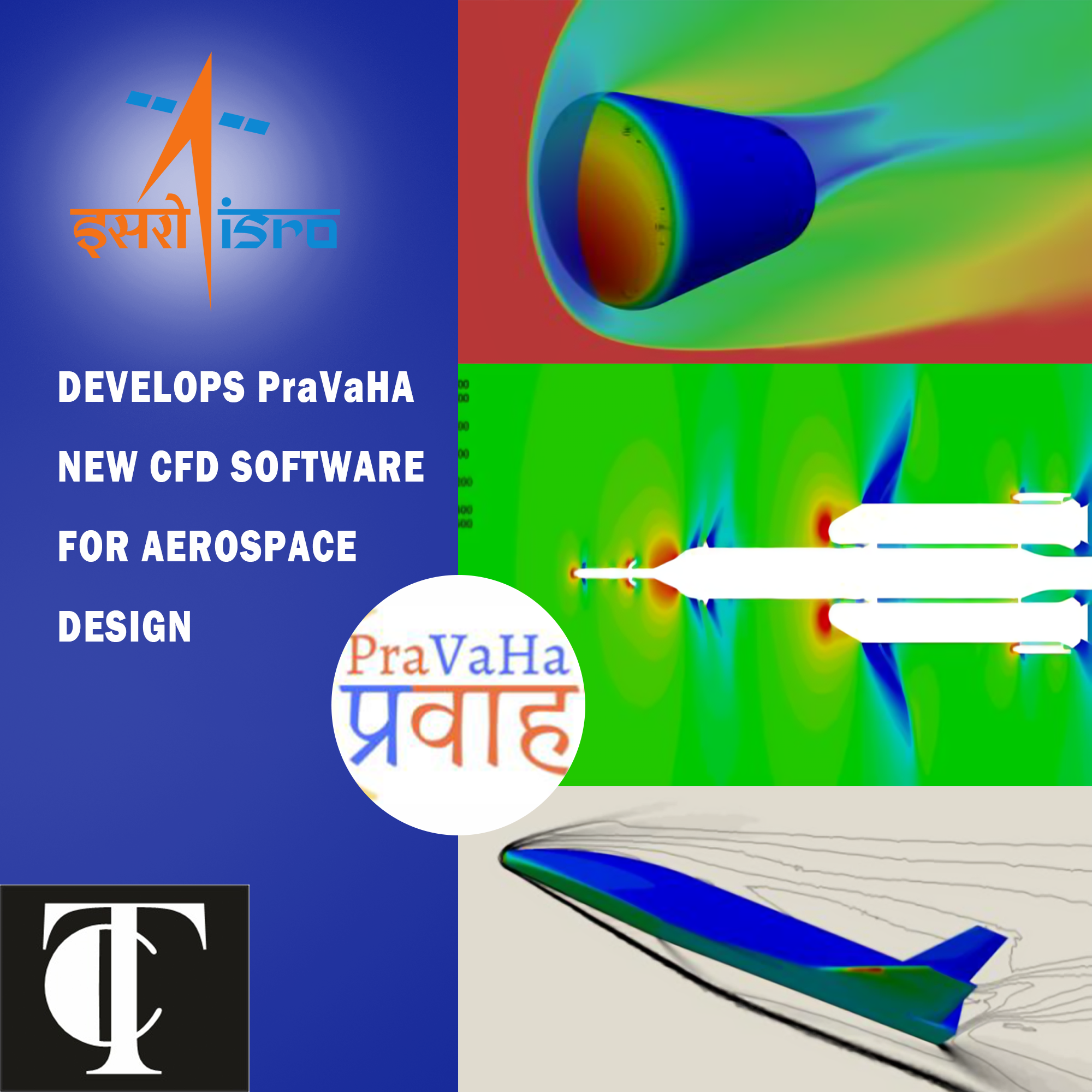


IN SHORT
The Computational Fluid Dynamics (CFD) program "PraVaHa," created by ISRO, evaluates aerodynamic and aerothermal conditions for aerospace vehicles. The aerodynamic design and analysis of launch vehicles, re-entry vehicles, and the Gaganyaan program depend heavily on this domestic software. In order to help universities and institutions solve difficult aerodynamic issues and assist India's objective of self-reliance, PraVaHa promises to replace commercial CFD tools.
“Parallel RANS Solver for Aerospace Vehicle Aero-thermo-dynamic Analysis” (PraVaHa) is a ground-breaking computational fluid dynamics (CFD) program released by the Indian Space Research Organization (ISRO). PraVaHa, created at the Vikram Sarabhai Space Centre (VSSC), aims to replicate internal and exterior flows on a range of aerospace vehicles, such as launch vehicles and re-entry vehicles with or without wings.
It’s crucial to understand the airflow surrounding aerospace structures during earth re-entry, including aircraft, rockets, and crew modules. Thermal Protection Systems (TPS) and vehicle designs and structures are designed with this knowledge in mind. During missions, the dynamic nature of aerodynamics can result in considerable noise pollution and flow problems. Accurately estimating these aerodynamic and aerothermal loads requires the use of CFD tools like PraVaHa, which solve the state equation and the equations of conservation of mass, momentum, and energy numerically.
PraVaHa is unique in that it can quickly and accurately simulate complex aerodynamic flows on high-performance computing clusters. Because of its effectiveness, it is a priceless tool for early aerodynamic design studies when evaluating several configurations is required. The Gaganyaan program has made significant use of the software to evaluate human-rated launch vehicles, including the Crew Escape System (CES), Crew Module (CM), and HLVM3.
PraVaHa is intended to make use of the CPU and GPU architectures found in both current and future supercomputers. This flexibility, together with a safe and versatile software foundation, enables collaborative software creation with government laboratories and academic institutions. PraVaHa is now capable of simulating airflow in both perfect gas and real gas environments. Validations are ongoing to expand its capacity to include chemical processes during scramjet vehicle combustion and air dissociation upon re-entry into the Earth.
With PraVaHa, there will be a strong domestic alternative for several commercial CFD tools that are utilized for aerodynamic characterization. ISRO hopes to assist India’s goal of attaining self-reliance (Atmanirbhar Bharat) by making this software available to a wider audience, including universities and organizations involved in building missiles, planes, and rockets. In terms of increasing India’s aerospace capabilities and technical independence, PraVaHa is a major achievement.
READ ALSO : India to Host 81st IATA Annual General Meeting in 2025